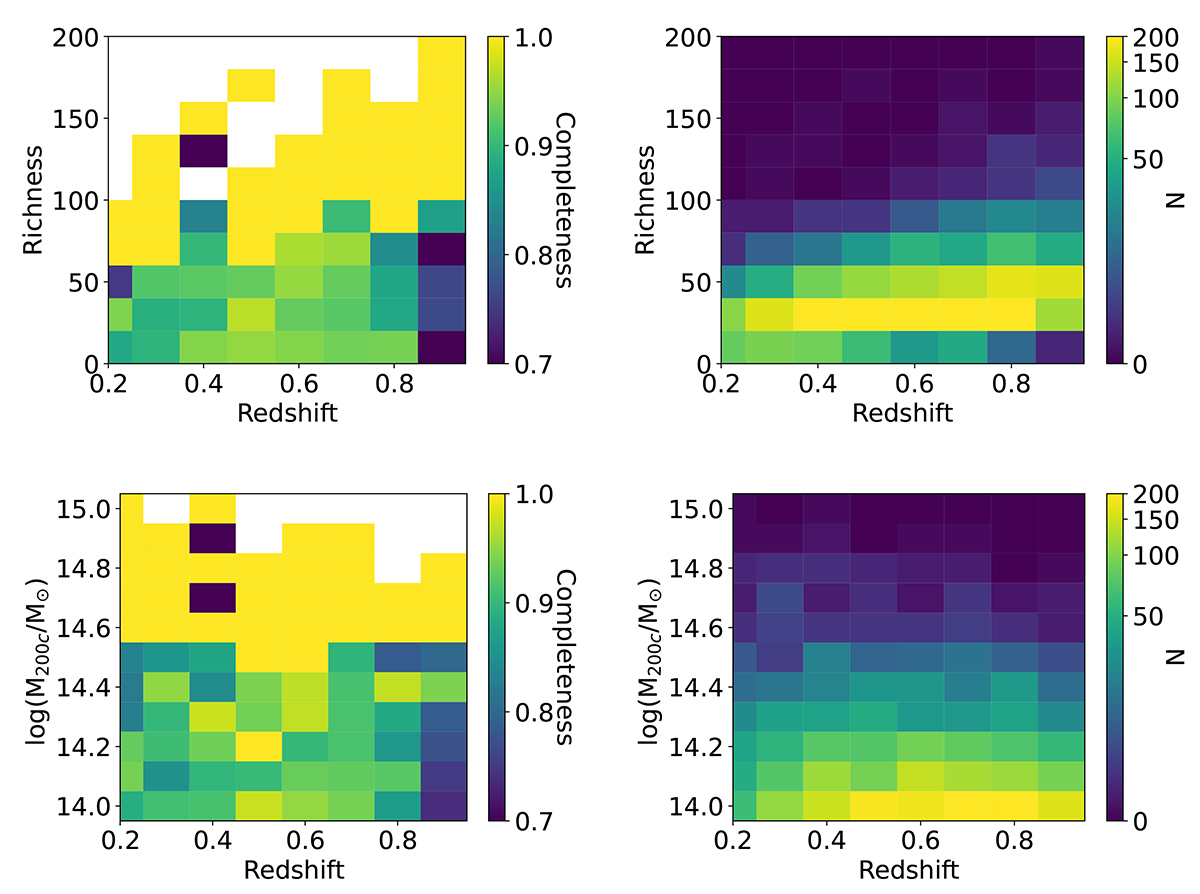Fig. 5.

Download original image
YOLO-CL DC2 detection completeness and the number of halos as a function of redshift and richness or halo mass. Left: YOLO-CL DC2 detection completeness as a function of redshift and richness (top) or halo mass (bottom). Right: Number of halos as a function of redshift and richness (top) or halo mass (bottom). The vertical colored bars show the color scale for the completeness (left) and the number of halos (right). The YOLO-CL selection is almost flat as a function of redshift up to z ∼ 0.8 when we consider the halo mass. The catalog is ∼100% complete for M200c ≳ 1014.6 M⊙ and richness ≳100 at all redshifts. When characterizing halos by their richness, the completeness is less flat as a function of redshift, as is also shown for SDSS observations in Grishin et al. (2023), and the completeness decreases abruptly to ∼70 − 75% at z > 0.8 and M200c ≲ 1014 M⊙. Comparing the figures on the left and on the right, some bins show very low completeness on the left only because there are no clusters in those bins.
Current usage metrics show cumulative count of Article Views (full-text article views including HTML views, PDF and ePub downloads, according to the available data) and Abstracts Views on Vision4Press platform.
Data correspond to usage on the plateform after 2015. The current usage metrics is available 48-96 hours after online publication and is updated daily on week days.
Initial download of the metrics may take a while.


